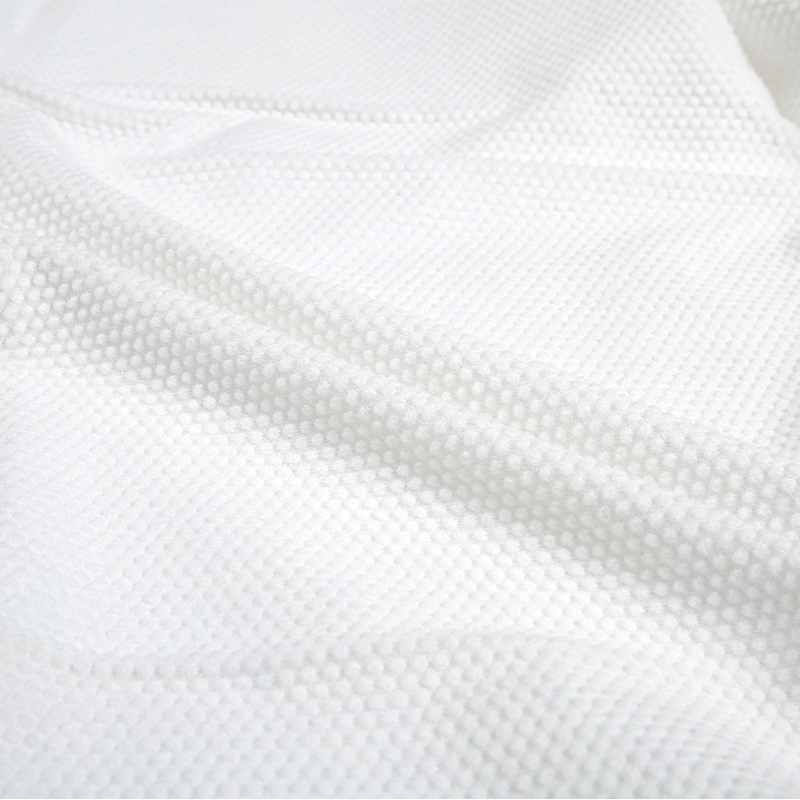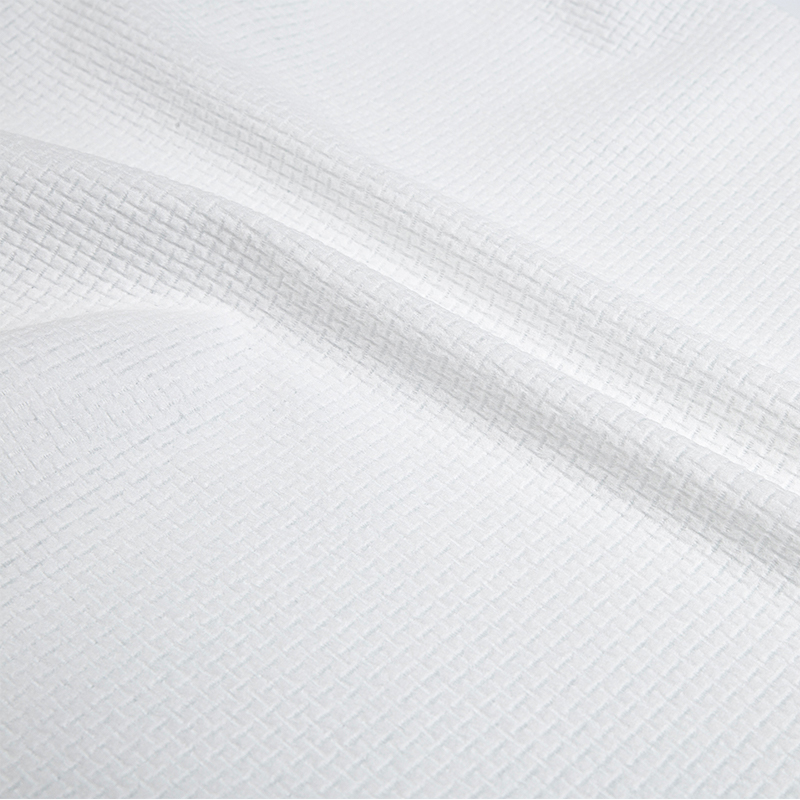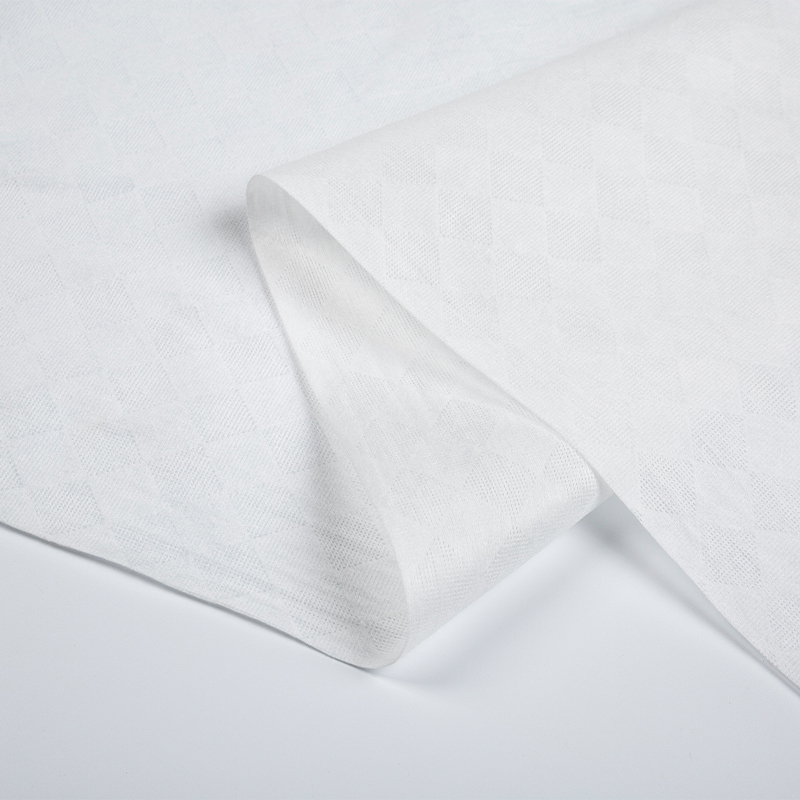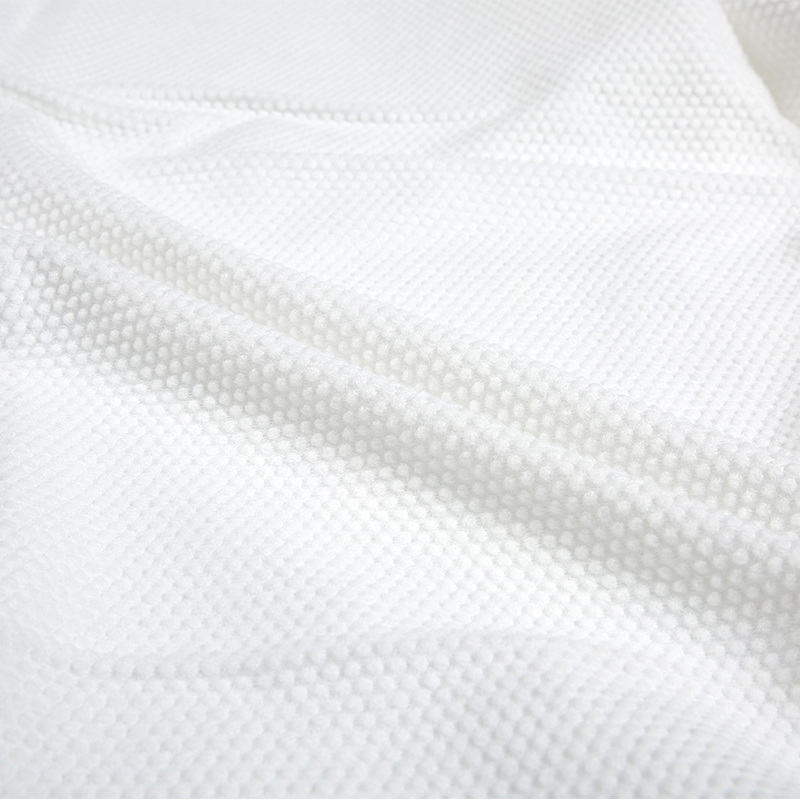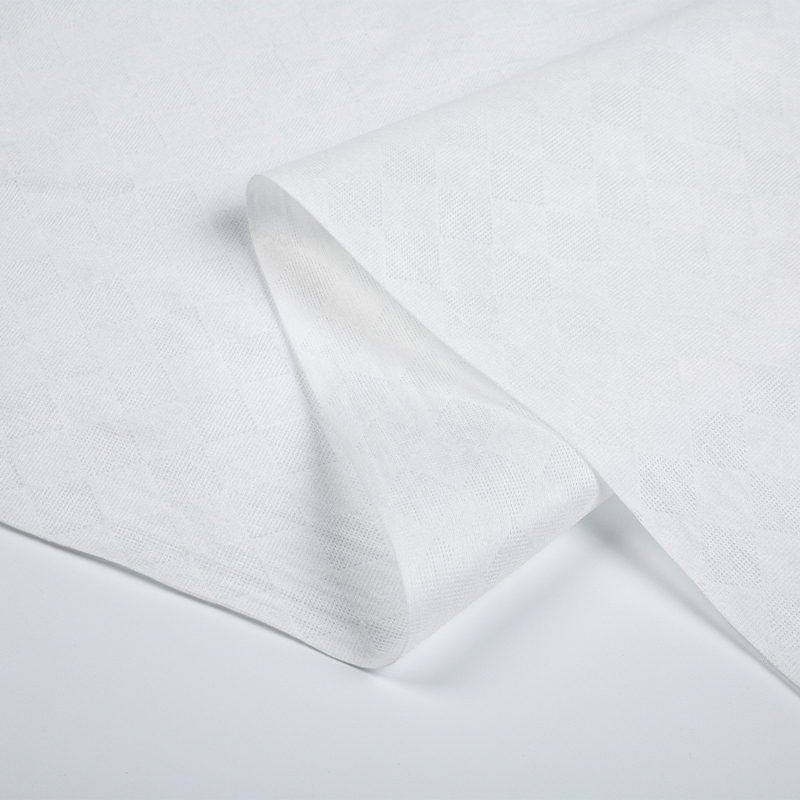Founded in 2022, Hangzhou Shunlong Nonwovens Technology Co., Ltd. is a professional China nonwoven fabric manufacturer and non-woven raw material factory
Semi-cross spunlace Nonwoven is a soft and breathable fabric based on laying different-sized fibers or cellulose in a web under high pressure and the velocity of water jets. The water jets entangle and bond the loose fibers into a cohesive web. This yields a fabric that has physical properties of softness, bulk, drapability, stretchiness, and good strength as well as, depending upon the fiber used, aesthetics that mimic traditional knitted or woven textiles. The finished fabric can be further processed to make embossed, aperture, and printed.
Generally speaking, the raw materials for spunlace non-woven fabrics can be chosen from various sources, such as polyester, polypropylene, viscose fiber, chitin fiber, superfine fiber, Tencel, bamboo fiber, wood pulp fiber, and seaweed fiber. In the production process, fibers are mixed and carded, then bonded with water jets to form a spunlaced non-woven fabric. It can then be further treated, such as dyeing, printing, or slitting into its final products.
Spunlaced non-woven fabrics are produced in a wide range of applications including medical materials (such as wet wipes and cotton soft towels), beauty materials (cotton sheets, face towels, washcloths and mask cloth), industrial cleaning materials and civil engineering cleaning materials, etc. They have strong water absorption, are resistant to pilling, are not easily deformed after rubbing and are highly sanitary.
To ensure the quality of the spunlaced non-woven fabric, we adopt strict testing methods. Throughout the whole production process, skilled workers pay close attention to each detail and perform in-process and final inspections on every product. We also have an advanced laboratory that conducts microbiological tests and other analyses of the finished product to ensure its stability and hygiene.
We have introduced three state-of-the-art spunlace nonwoven production lines from Andritz France one after another since 2018. Two of them are semi-cross laying, and the other is parallel laying. The semi-cross production line has the advantage that it can meet all kinds of customer demands by changing the laying method. This line is capable of producing both parallel and cross-lapped spunlace with a high ratio of tensile strength in MD and CD, and its quality level is comparable to that of the parallel laying spunlace.



 English
English 日本語
日本語 русский
русский Español
Español